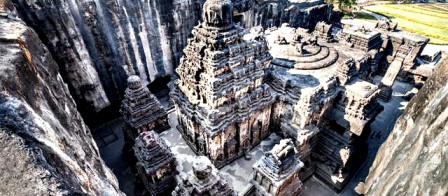Six Schools of Indian Philosophy – History Study Notes & Stuff
Indian Philosophy/ Hindu Philosophy is classified into 6 astika (orthodox) schools and 3 nastika (heterodox) schools.
The basic difference between the two branches of Hindu philosophy is based on the recognition of the Vedas. Astika (Orthodox) schools recognize the authority of Vedas whilen Nastika (heterodox) schools don’t believe in the authority of Vedas. Eight of these nine systems are atheists because they have no place for God. Only Uttara Mimamsa, also known as Vedanta, has a place for God in it.
Here we are giving the basic characteristics of the six Astika schools of Indian philosophy.
Six Orthodox Schools of Indian Philosophy:
Samkhya School of Indian Philosophy
- Its propounder was Kapila, who authored Samkhya Sutra and it is the oldest philosophy.
- It is generally believed that Sankhya Philosophy is dualistic and not monistic because Samkhya System considers reality to be constituted by two principle: Purush(spirit) and Prakriti(nature).
- In the beginning, the philosophy was materialistic because it only talked about Prakrit, but later on it also added the element of purush and both of them are considered completely independent and absolute.
- Purush : There is only consciousness and it cannot be changed or modified.
- Prakrit is composed of three basic elements (gunas) - namely Tamas, Rajas and Sattva.
- To explain the creation of the universe, Sankhya philosophy establishes a connection between purusha and Prakrit.
Yoga School of Indian Philosophy
- This system was described in the Yoga Sutra which was written by Patanjali around second century BC.
- Yoga means the union of two principal entities.
- It works towards systematic release of Purusha from Prakriti by purifying and controlling changes in mental mechanism, that means of physical and mental discipline is the concept of Yoga.
- Yoga presents a practical path for control of the mind, body and sensory organs. Therefore, it is considered a means of attaining mukti/ liberation.
- Yoga does not require belief in God, although such a belief is accepted as a guide and teacher that help in the initial stage of mental concentration and control of the mind.
- It says that freedom can be attained by practicing yama(self-control), niyama(observation of rules), asana(fixed postures), pranayama(breath control), pratyahara(choosin an object), dharna(fixing the mind), dhyana(concentration), Samadhi(complete dissolution of self by merging mind and object).
Nyaya School of Philosophy
- It is described in the Nyaya Sutra written by Gautama and It is a technique of logical thinking.
- Nyaya Philosophy states that nothing is acceptable unless without reason and experience (scientific approach).
- The Nyaya system recognizes God as one who creates and destroys the universe.
Vaisheshika School of Indian Philosophy
- The proponent of this system of philosophy was Kanada.
- A significant work on Vaisheshika is Prashastapada.
- Vaisheshik is a realistic and objective philosophy of universe.
- It considers the reality to have many bases or categories, which are attribute, substance, action, genus, distinct quality and inference.
- Its believes that the objects of the universe are made up of five elements: earth, water, air, fire and ether.
- It considers God to be the guiding principle.
- It explains the phenomenon of the universe by atomic theory, where matter consists of a combination of atoms and molecules. It explains the mechanical process of formation of the universe.
Mimansa School of Indian Philosophy
- The names of Sabar Swami and Kumarila Bhatt are associated with Mimamsa School.
- The main text of Mimansa is Sutra of Jaimini, written around 3rd century BC.
- It is based on the analysis of the interpretation, application and usage of the Brahmin (and Samhita) part of the Vedas.
- Mimansa encompasses the Nyaya-Vaisheshika system.
- It emphasizes the concept of valid knowledge.
- The essence of the system is Dharma, considered to be a dispenser of fruits of actions.
- Mimansa lays stress on ritualistic parts of Vedas.
Vedanta School of Indian Philosophy
- Vedanta reflects the philosophy of the Upanishads (the concluding part of the Vedas).
- Vedanta's exponent is Shankaracharya, who wrote commentaries on the Upanishads, Brahma Sutras and Bhagavad Gita.
- His philosophical views are known as Advaita Vedanta. Advaita means non-dualism(belief in one reality).
- Ramanuja is considered another important Advaita Scholar.
- Shankaracharya said that ultimate reality is Brahman. And there is no distinction between self and Brahman.
- Brahman is considered to be the highest truth and knowledge of existence and unchanging. Knowledge of Brahma is the essence of all things and ultimate existence.
We hope that this short notes about Six Schools of Indian Philosophy is useful for your quick revision. If you want us to add any more details to this article, please do let us know in the comments below.








0 Comments